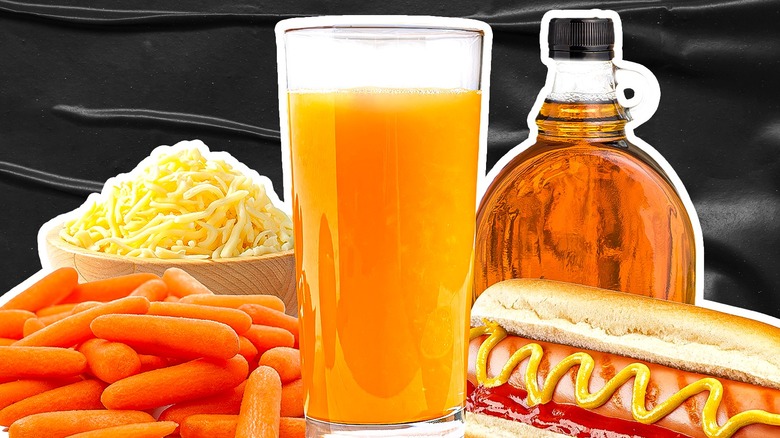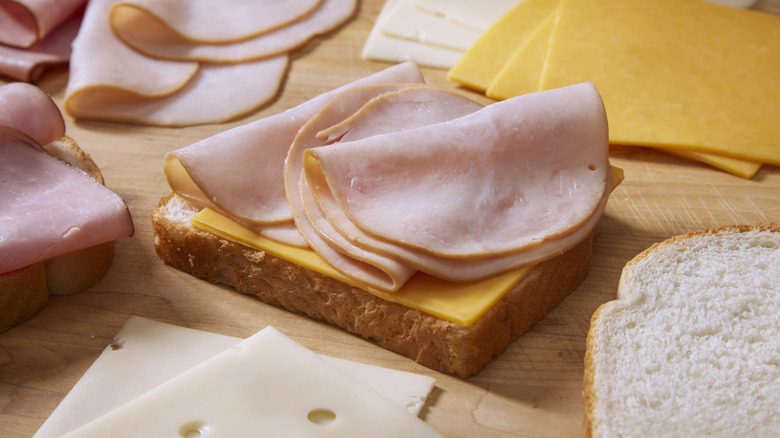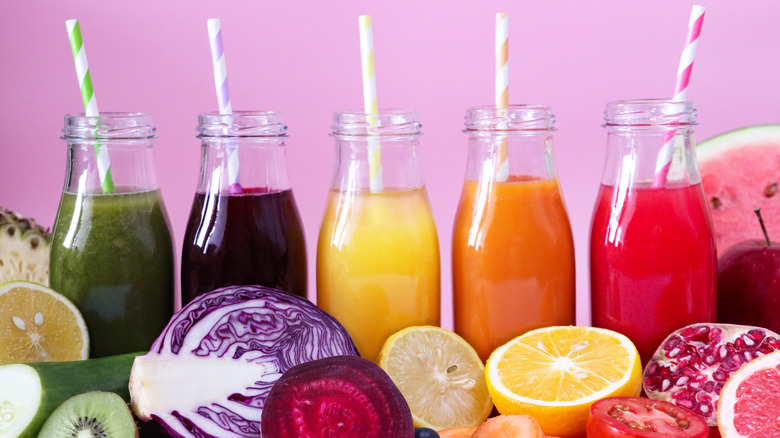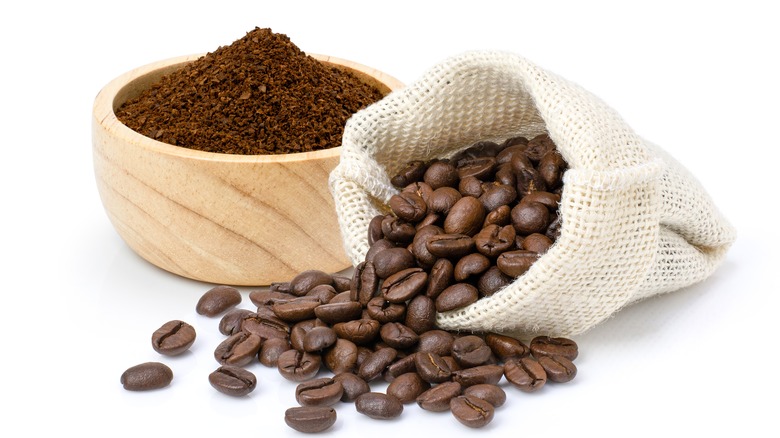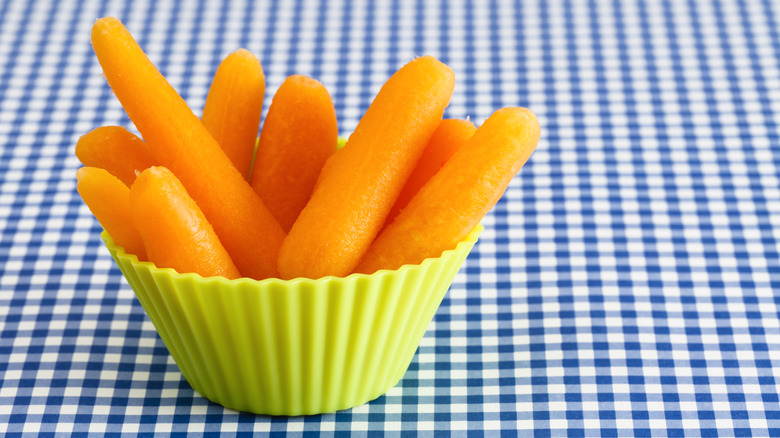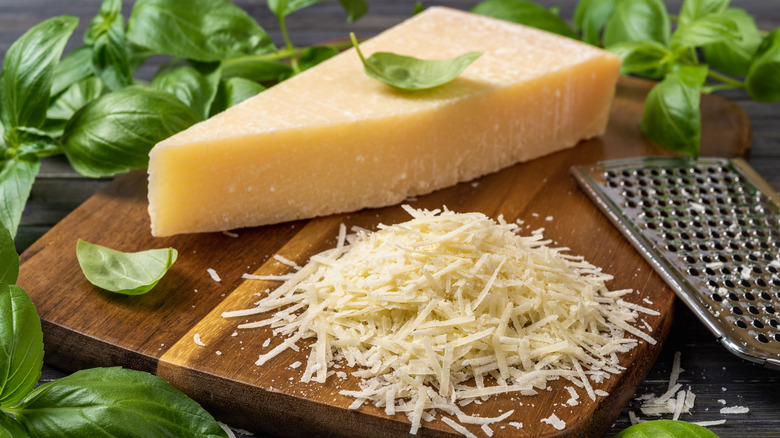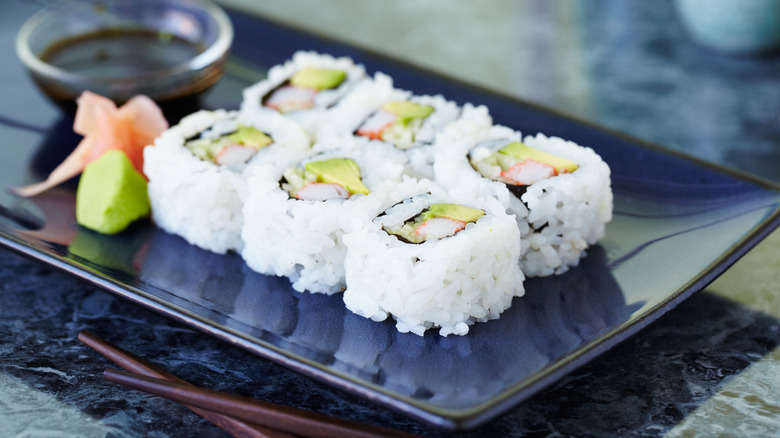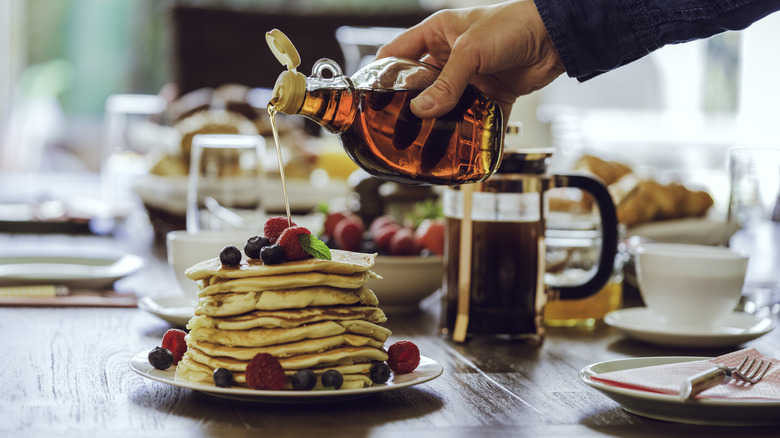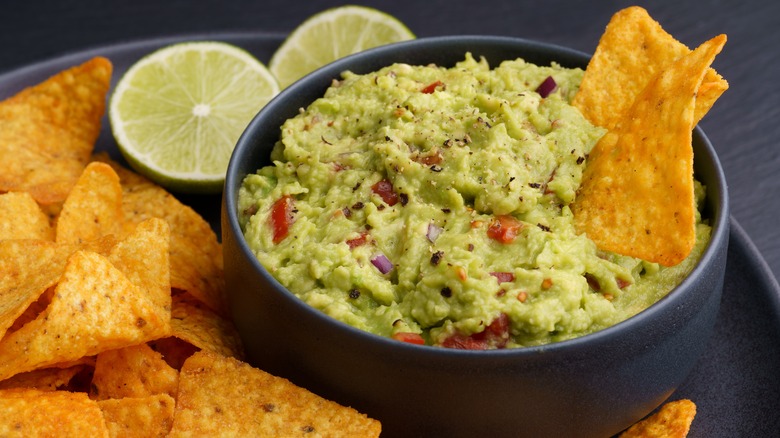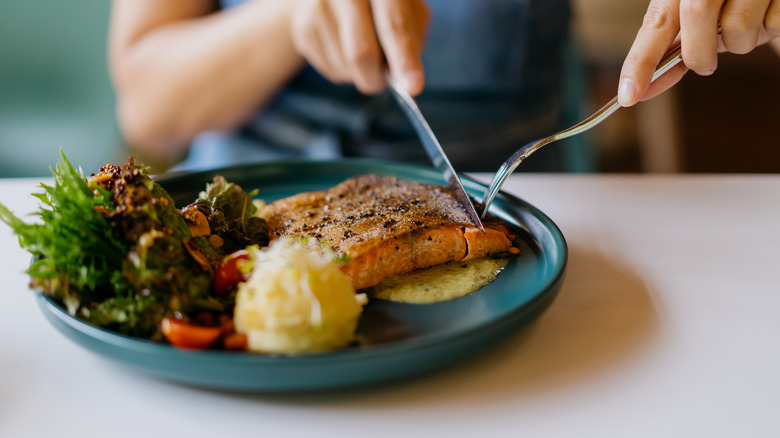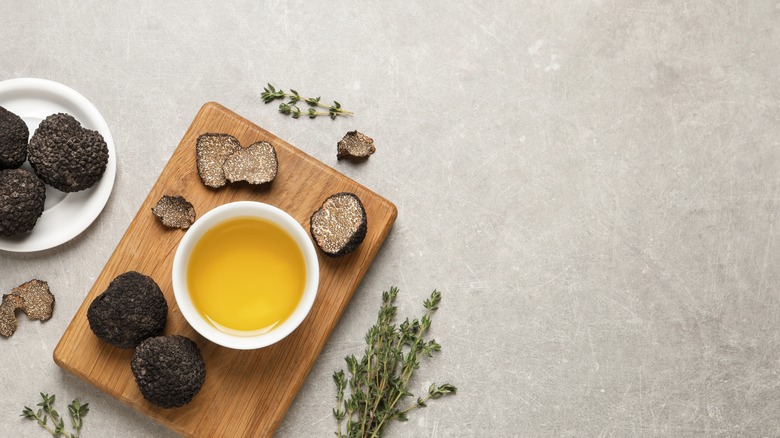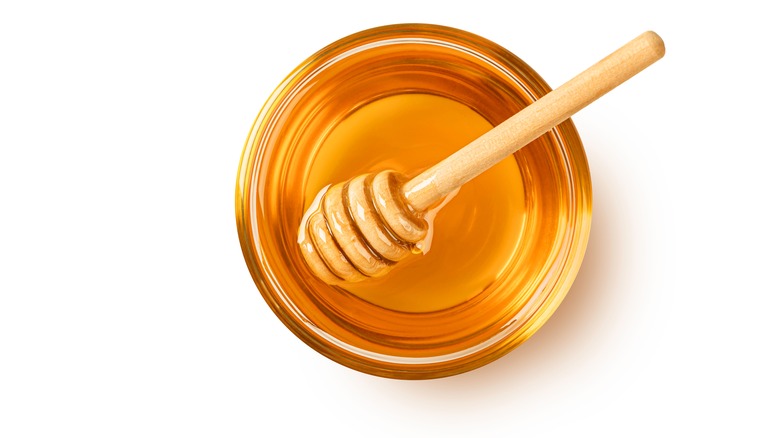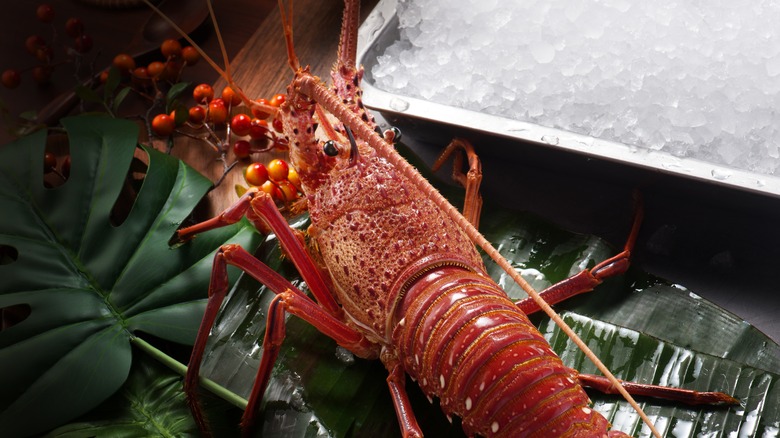Fake Foods You'll Never Eat Again Once You Know How They Are Made
It is scary to think about but shopping at a grocery store or eating out puts the consumer in a vulnerable position. The average person has to trust the food industry to ethically raise, prepare, and label their food accurately because the alternative of being self-sufficient is not practical for most. The food industry knows this and takes advantage.
Food fraud is a common practice in the industry and even has a historical context. During the medieval period foreign spices were faked by traders who mixed cheaper local herbs such as oregano with more expensive wares such as black pepper. During the Industrial Revolution flour was diluted with chalk. The modern era brings even more opportunities for fake food, including species substitution.
Economic reasons, may be the motivating factor but it can be difficult to nail down exactly how often this occurs and how much this costs because the culprits are skilled in their deception. According to the Food and Drug Administration, an outside estimate found that food fraud impacts 1% of the global food industry costing around $10-15 million. Other estimates are even bleaker placing the cost at $40 million.
Things are not all doom and gloom. An educated consumer can do their due diligence to avoid fake foods when armed with some knowledge. The 12 items on this list will help you do just that.
Deli meats
Deli meats are a popular lunch food partly because they appear healthy and are a good source of lean protein. In fact a recent study found that 47% of Americans eat a sandwich on any given day. When consuming your favorite sandwich, you might be getting more than you bargained for. Deli meats are processed to make them last longer on shelves and this comes at a cost to the consumer's health.
Deli meats are cured by adding nitrates or nitrites. When these mix with the amines found in meat nitrosamines are formed. Nitrosamines have been proven in some studies to cause cancer in laboratory animals and increase the risk of the disease in humans. As a direct result of these findings, the World Health Organization classified deli meats as a class 1 carcinogen.
Many meat processors have tried to find a way to work around this by utilizing celery extract instead of sodium nitrite. Many consumers are falsely appeased by the celery extract because it appears to be a natural ingredient but the chemical reaction is the same. Processors are simply allowed to label it as uncured. Make sure to read the fine print on the label.
Beyond nitrates and nitrites, there are other concerning ingredients. Most deli meats have a ton of added sodium to make them taste better and last longer. There are also added sugars and likely a high amount of saturated fats. The bottom line is one should limit how much deli meat one consumes.
Fruit juice
It is easy to assume when buying your favorite fruit juice that the pretty label on the outside of the bottle reflects what is inside. Unfortunately, this is not always the case as a recent study published in the American Journal of Public Health found. The Food and Drug Administration allows the name and graphic to represent the juice's flavor but not its actual ingredients. This study could not conclusively prove if consumers were aware of this deception.
In order to make a more informed purchase, read the label carefully when picking a fruit juice. Drinks that are not 100% juice will have words such as fruit cocktail, nectar, or punch with water being one of the main ingredients.Essentially, the label on fruit juice could be lying to you, so don't be fooled by the pretty graphics.
Beyond the misleading labeling, fruit juice has other drawbacks. When one chooses to drink a glass of juice instead of eating a piece of fruit, one does not get the benefits of fiber. Fruit juice is also high in sugar comparable to drinking a soda. Fruit juice is not all bad as it does have vitamins, but like deli meat, it should be consumed in moderation.
Coffee
Climate change is coming for your cup of morning joe. Time Magazine reported that some studies estimate that 70% of the world's coffee supply could run out by 2080. For many people addicted to the legal stimulant as a way to get them up in the morning and through their long work days, this is horrible news. Another blow is the coffee one is currently drinking could be fraudulent in one of two ways. It could be diluted with fillers or not made up of the beans its label indicates.
Ground coffee has the potential to be filled with wheat, soybean, brown sugar, barley, corn, seeds, and sticks. It is next to impossible to spot this with the naked eye. This is problematic for many who have allergies to the hidden ingredients such as wheat or soy. Popular beans such as Arabica and Kona are often faked for cheaper ones.
Many are fighting back against this counterfeit caffeine injustice. In 2014, a group of Brazilian researchers used a process called liquid chromatography that works by separating the different parts of coffee in order to properly identify them and weed out the imposters. Another group of Italian researchers led by Luigi Servillo used a similar process to differentiate between the Robusta bean and more expensive Arabica in 2016. Farmers of Kona coffee became eligible in 2021 for a settlement in a federal class action lawsuit against 22 retailers and suppliers who were falsely using the Hawaiian bean's name. As it stands, any blend associated with the region will have to contain at least 10% of the bean.
Baby carrots
Most people don't spend a lot of time thinking about baby carrots. Which is why it is easy to assume the food item is simply an immature carrot like the name implies. The truth is baby carrots are another processed food in disguise. There are no daddy and mommy carrots involved in their creation.
Baby carrots are just normal carrots that are cut up and processed to be small and adorable. First their tops are cut off and then they are cut into two inch pieces. Next they are peeled and the edges are smoothed in a process called polishing. Then they are inspected and packaged to send out to the uneducated masses. When one buys baby carrots, one is paying for the process without any added health benefits. It is much more cost effective to buy plain old normal carrots to chop and peel them yourself. A one pound bag of Green Giant baby carrots from Dollar General goes for $1.95 on Door Dash while plain old regular carrots cost $.99 a pound.
Carrots have been touted as a perfect health food and have many benefits. They are a good source of beta carotene, fiber, vitamin K1, and potassium. They have been proven to improve eyesight, lower cholesterol, and reduce the risk of cancer. While baby carrots are indeed carrots, they're really nothing more than clever marketing.
Parmesan cheese
A common kitchen staple many consumers have in their refrigerators is a shredded Parmesan cheese shaker. Many of these falsely claim to be 100% Parmesan cheese but on several occasions, this has been proven to be false.
In 2016 Bloomberg News did its own investigation of popular grated Parmesan brands. The researchers tested Jewel-Osco's Everyday 100% Grated Parmesan Cheese, Walmart Stores Inc.'s Great Value 100% Grated Parmesan Cheese, Whole Foods 365 brand, and Kraft. All were found to contain cellulose, a wood pulp additive that prevents grated cheese from clumping which is safe to consume in small amounts.
The Food and Drug Administration looked into Castle Cheese Inc. in 2016 and found its Parmesan cheese shakers, which are sold in popular stores such as Target, contained no Parmesan at all. Instead they were filled with Swiss, mozzarella, white cheddar and cellulose. As a result of these findings, president Michelle Myrter was sentenced to three years' probation for her crimes. Beyond this case there have been over 50 class-action lawsuits brought against Parmesan producers so these are not isolated incidents.
The easiest way to avoid fake Parmesan Cheese is to stop buying grated cheese. Instead, do it yourself at home. Bonus points if you can buy a whole piece with the rind which should be stamped with a seal of approval by the Parmigiano-Reggiano Cheese Consortium proving its legitimacy. In 2008, Parmigiano-Reggiano cheese became a Protected Designation of Origin product, meaning it has strict rules about its creation including its origin.
Imitation crab
Snagging fresh, good seafood can be expensive for a restaurant and imitation crab is frequently used in sushi, seafood salad, and crab cakes even if it is not expressly stated on the menu or label. Some restaurants labeled it as "krab" to indicate its less-than-authentic state. Imitation crab is essentially processed fish called surimi. Surimi is made by taking fish, most of the time pollock, de-boning, washing, and mincing into a paste. Other ingredients such as water, starches, and protein are added before it is heated and molded into a crab meat like shape. It is used because it is cheaper than real crab meat.
Real crab meat contains better nutrients than its counterpart. Three ounces of imitation crab contains only 6.5 grams of protein while the same amount of the real deal has more than double at 16.5 grams. The additives used to create imitation crab such as monosodium glutamate also known as MSG and sodium benzoate are technically safe to consume but have been loosely linked to health concerns with more studies needed to comprehensively prove this theory. The bottom line is imitation crab meat is processed and sometimes known as the hotdog of the sea so it is good to one be aware of what one is getting into when eating it.
Maple syrup
Sugar can solve many of life's problems but it is not the most healthy of solutions when times get tough. Some people may choose to ditch granular sugar for maple syrup in their cooking which is why it is so disheartening to hear that it might be faked. To prevent being deceived read the labels carefully when purchasing. The legit kind should only have maple sap listed as its sole ingredient. Real maple syrup is made by boiling down the sap with the fake ones' labels listing ingredients such as high-fructose corn syrup, cellulose gum, sorbitol, and caramel color.
Collecting maple sap is an art form that requires precise conditions. The nights have to be freezing but the days warm around 40-50 degrees Fahrenheit. The season in New England only lasts around a month. The time constraints and high cost of producing maple syrup make it ripe for counterfeiting.
Real maple syrup has many health benefits beyond being a good sugar substitute. It is an excellent source of potassium with 42 milligrams in one tablespoon. There is also calcium, zinc, manganese, magnesium, and iron with trace amounts of vitamins B1, B2, B5, B6, biotin and folic acid. It is well worth it to make sure you are getting the real product both for taste and for wellness reasons.
Prepackaged guacamole
It is almost a given when watching the big game that there will be chips and guacamole. Americans eat 105 million pounds of the delicious green dip on Super Bowl Sunday, alone. Almost everyone has an opinion on how to best make the popular dish, and of course, may opt to take the easy way out and buy it premade.
Some versions such as Old El Paso's Chunky Guacamole rely on additives to extend their shelf life. It is chock full of sulfites as well as other surprising ingredients. It contains potato flakes, modified corn starch, and sugar. Perhaps its biggest offenses are the cream cheese, cream, whey extract, whey powder, and caseinate, as most guacamole purists would be horrified at the addition of any milk products. Its main ingredient is water instead of avocados.
There are alternative ways to keep premade guacamole fresh. Other brands such as Wholly Guacamole do not use additives but instead turn to science utilizing a process called high pressure processing technology. This is all natural and approved by the United States Department of Agriculture. It works by applying water pressure so high that microorganisms and enzymes remain dormant preventing bacteria such as salmonella from growing without diminishing nutrition and taste. If you are going to consume premade guacamole this is the superior method of preparation to look out for.
Fish
The next time you spring for an expensive fish such as a red snapper in a restaurant or grocery store, think twice. There's a chance you are not getting exactly what you ordered and fish fraud or species substitution happens frequently worldwide. This occurs when one orders one type of fish and is instead served a cheaper variety.
In 2018 the New York State Attorney General's Office conducted a thorough investigation of local supermarkets buying fish at 29 unique chains and 155 locations. They DNA tested the samples and found one in four were being sold as something other than its genetic make-up. The biggest offenders were wild caught salmon with 27.59% mislabeled, red snapper with 67% mislabeled, and lemon sole with 87.5% mislabeled.
Inside Edition did its own investigative reporting in 2015. They ordered sushi at 25 popular restaurants in Los Angeles and New York. Sixty-eight percent of the time, the samples once DNA tested proved to be different than what was promised. White tuna was often substituted for a hard to digest fish called escolar, which is illegal in Japan and Italy. Escolar is nicknamed the "ex-lax fish" because of its tendencies to cause bathroom problems.
Truffle oil
Truffles are a popular, trendy buzz word in the culinary scene. Part of their appeal is their scarcity which also makes them a prime target for food fraud. Truffle oil is the most accessible way to enter into the exclusive world of truffles but oftentimes is faked. Many truffle oils are made with synthetic ingredients such as 2,4-dithiapentane instead of actual truffles. This molecule gives the unique earthy aroma tricking the consumer into believing its validity. Some chefs will even go as far as using the oil in dishes that have actual truffles in them just to ensure guests get the full aromatic experience.
It is extremely difficult to grow truffles. These fungi grow underground on the roots of specific trees such as French Oaks developing a symbiotic relationship. The truffles help the tree find water and the tree provides sugars and starches. A human cannot tell when a truffle is ripe without the help of a specially trained dog or pig. It can take years for a truffle crop to come into fruition making this an expensive and risky undertaking.
Many people are willing to spend big money on the culinary delicacy adding fuel to the fraudulent fire. In 2014, one anonymous Hong Kong bidder spent $120,000 on two pieces of white truffle weighing two pounds. In 2012, Jay-Z spent $20,000 at Alba's truffle locations in Italy, cementing the food item's celebrity status.
Honey
Honey is a wonderful addition to cornbread or tea but make sure you are getting the legitimate item before you indulge in its sweetness. According to one study, it's the third most faked food in the world because of the addition of ingredients such as corn syrup or a misrepresentation about its geographic origin.
Fake honey comes in a couple of different forms. It can be a watered down version of the real thing with the addition of sugar syrup. It can also be sugar water with additives and chemicals to pass it off as real honey. The worst culprits use high fructose corn syrup as its main ingredient. Real honey comes straight from the hive and is buzz-worthy because of its many health benefits. It is antibacterial and anti-inflammatory. It can help improve allergies by exposing the body to small amounts of pollen particles. Fake honey does none of these, things leaving the consumer stung.
Like many of the items on this list fake honey exists because of economic reasons. It takes time, dedication, and knowledge to raise bees and sugar water is just the easier route. A simple way to test your honey at home is putting a spoonful in a glass of water. If it sinks to the bottom it's real, if it floats and dissolves it is counterfeit.
Lobster
Lobster is a dish often reserved for special occasions such as anniversaries and birthdays. It is just so fancy. A celebration such as that can be ruined by a fake lobster which is a more complex problem than one might think. Barton Seaver, the director of Healthy and Sustainable Food Programs at the Harvard School of Public Health, breaks this down stating that the problem is twofold. There are dozens of species of lobster and the average consumer is not educated about this fact. Seaver's comments were a reaction to a Inside Edition investigation that found 35% of lobster ordered from 28 restaurants was fake.
Imitation lobster comes in a couple of different forms such as a mixture of Alaskan pollack, whiting, or haddock. This version goes through the same process of surimi as fake crab meat to be passed off as real lobster. Some people also wrongly consider Langostino a type of fake lobster but according to Bob Bayer, the executive director of the Lobster Institute, this is inaccurate information. Langostino is legitimate but not what people expect when ordering so make sure to confirm with your server the actual species to avoid disappointment. Some other tips to avoid fake lobster is to order it prepared simply. If it has claws, it is probably the real thing. If you order soups, raviolis, and salads your chances of getting real lobster is much lower.
